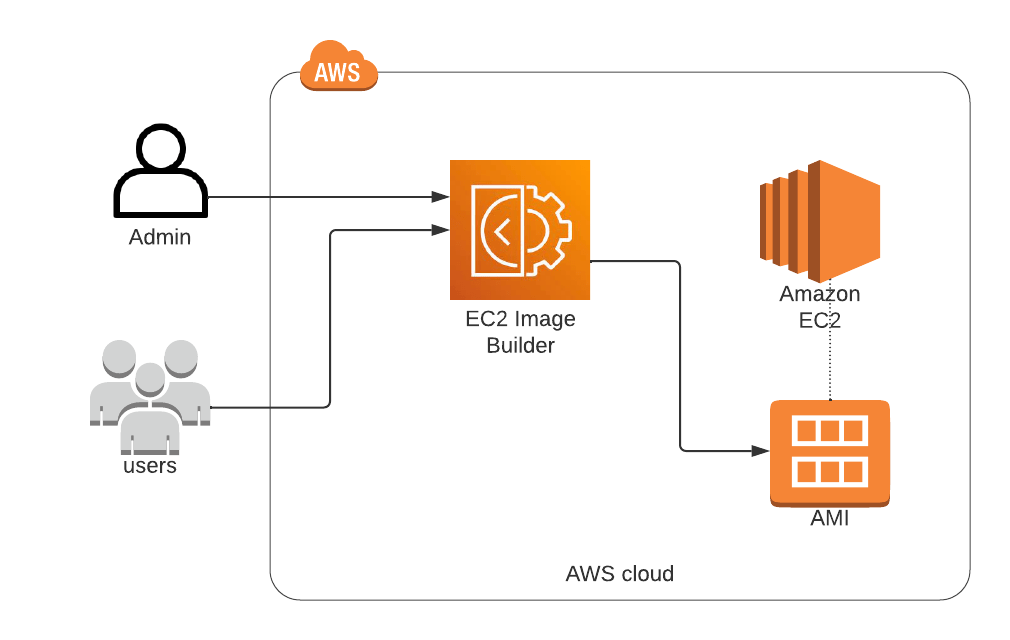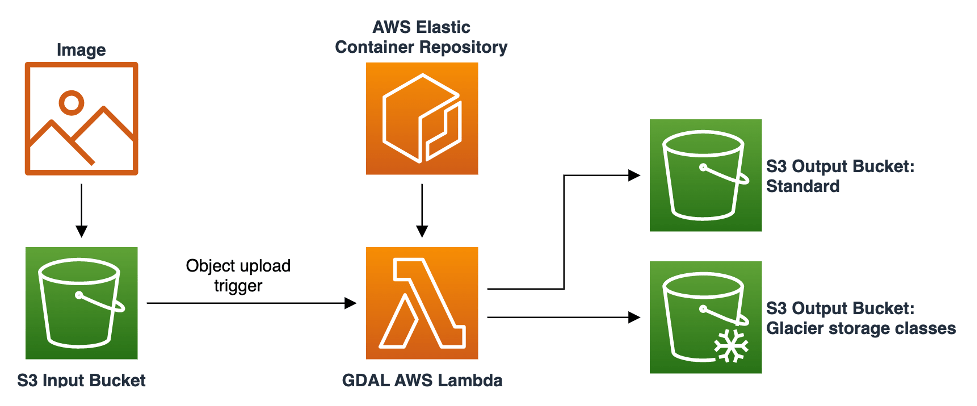
- Introduction to AWS Glue
- Understanding Glue Components (Crawlers, Jobs, Data Catalog)
- ETL Process with AWS Glue
- Working with AWS Glue Data Catalog
- AWS Glue vs Other ETL Tools
- Security and Compliance in AWS Glue
- Performance Optimization Tips
- Real-World Use Cases
- Advanced Features of AWS Glue
- Conclusion
AWS Glue is a fully managed ETL (Extract, Transform, Load) service that helps organizations prepare and transform data for analytics. It simplifies data integration by automatically discovering, cataloging, and processing data from multiple sources. With AWS Glue, businesses can efficiently clean, enrich, and move data into data lakes, warehouses, or analytics platforms. Amazon Web Services Training blog will explore AWS Glue, its significance, and its implementation. We will also discuss key features, best practices, and tools for optimizing data workflows. AWS Glue enables seamless data transformation, making it a vital component for organizations leveraging cloud-based analytics and big data processing.
Introduction to AWS Glue
AWS Glue is a fully managed extract, transform, and load (ETL) service from Amazon Web Services (AWS) that simplifies data preparation for analytics. It automates much of the heavy lifting associated with data discovery, transformation, and job execution. AWS Glue is serverless, meaning users do not have to manage infrastructure, and it scales automatically as per workload demands. It is frequently used to prepare and combine data from many sources so that reporting, machine learning, and business intelligence may be used. AWS Glue is a crucial component of contemporary data pipelines since it easily interacts with AWS analytics and AI/ML services. By doing away with the requirement for conventional ETL infrastructure, it lowers operating costs and boosts productivity.
Understanding Glue Components (Crawlers, Jobs, Data Catalog)
Knowing the Parts of Glue (Crawlers, Jobs, Data Catalog) Several essential elements make up AWS Glue, which makes data processing easier:

- Glue Data Catalog on AWS: A centralized metadata repository that keeps track of and arranges data source information. It makes schema management and data discovery simple.
- Crawlers: Automated tools that AWS Batch Automate Optimize Job Processing , infer schemas, and populate the Data Catalog. This reduces the need for manual schema definitions. Crawlers can be scheduled to run periodically and update schema changes dynamically.
- Jobs: Defined ETL processes that extract, transform, and load data. Jobs can be written in Python or Spark. AWS Glue supports both batch and streaming ETL jobs.
- Triggers: Used to schedule or automate job execution based on conditions or events. AWS Glue allows event-driven ETL job execution through Amazon Event Bridge and AWS Lambda triggers.
Glue Studio and Glue Databrew are visual interfaces that simplify the creation and preparation of ETL processes. Glue Databrew allows data analysts to cleanse and prepare data without writing complex code.
Learn the fundamentals of Amazon Web Services with this AWS Certification Training.
ETL Process with AWS Glue
AWS Glue streamlines ETL workflows by automating data extraction, transformation, and loading processes. It efficiently extracts data from multiple sources, including Amazon S3, RDS, DynamoDB, and external databases, using built-in connectors for seamless integration. Once extracted, AWS Glue allows users to transform data with PySpark or Python scripts, ensuring schema consistency through Glue DynamicFrames. The platform supports built-in transformations such as filtering, mapping, and aggregation, enabling data cleansing and enrichment. After transformation, the processed data is loaded into destinations like AWS Serverless Computing Comprehensive Guide , Snowflake, or another S3 bucket, supporting batch and streaming ETL jobs. AWS Glue is highly flexible and can handle structured and semi-structured data formats, including JSON, CSV, Parquet, and Avro. With its automation capabilities and scalability, AWS Glue simplifies data processing, making it a powerful choice for businesses managing large-scale analytics and big data workflows in the cloud. Additionally, AWS Glue integrates with AWS Lake Formation, enabling centralized data governance and access control. It also provides job scheduling and orchestration features, allowing users to automate ETL pipelines efficiently. The serverless architecture eliminates infrastructure management, reducing operational overhead. AWS Glue’s data catalog stores metadata, making it easier to discover, query, and manage datasets across different services. These capabilities make AWS Glue an essential component for modern data engineering and analytics solutions.
Dive into Amazon Web Services by enrolling in this AWS Certification Training today.
Working with AWS Glue Data Catalog
The AWS Glue Data Catalog provides a unified metadata repository that enables easy schema discovery and data governance. Key features include:
- Schema Evolution: Supports automatic schema updates for dynamic datasets.
- Version Control: Tracks metadata changes, allowing for historical queries.
- Integration: Works with AWS services like Athena, Redshift Spectrum, and EMR for seamless querying.
- Fine-Grained Access Control: AWS Lake Formation enhances security by providing role-based access control for data assets.
- Advanced-Data Organization: AWS Glue Data Catalog helps categorize and structure metadata, making it easier to locate and manage datasets efficiently.
- Automated Data Crawling: Built-in crawlers automatically scan Understanding Amazon Simple Queue Service, extract schema details, and populate the catalog with relevant metadata.
- Cross-Account Data Sharing: Supports secure data sharing across multiple AWS accounts, improving collaboration while maintaining access controls.
- Performance Optimization: Enhances query performance by indexing metadata, allowing faster data retrieval and reduced processing time.
- Cost-Effective Management: Reduces operational overhead by automating metadata management, and eliminating manual efforts in handling large-scale datasets.
AWS Glue Data Catalog allows organizations to establish a well-structured metadata repository, reducing the complexity of managing data across multiple environments.
AWS Glue vs Other ETL Tools
AWS Glue offers advantages over traditional ETL solutions like Talend, Informatica, and Apache NiFi. No need for infrastructure management. AWS Training automatically provisions resources as needed.Costs are based on actual usage, reducing overhead. Works natively with AWS services for better performance. Automatically scales based on workload demand. However, compared to GUI-based ETL tools, AWS Glue has a learning curve and may not support all third-party connectors. Unlike Informatica, which has a broad set of connectors, AWS Glue is primarily optimized for AWS services.
Take charge of your Cloud Computing career by enrolling in ACTE’s AWS Master Program Training Course today!
Security and Compliance in AWS Glue
AWS Glue offers robust security features to help organizations maintain compliance with industry regulations such as HIPAA, GDPR, and SOC. It ensures data protection through encryption, access control, auditing, and advanced security integrations. AWS Key Management Service (KMS) encrypts data both at rest and in transit, preventing unauthorized access. Additionally, AWS Glue integrates with AWS Identity and Access Management (IAM), allowing organizations to implement fine-grained, role-based access control to restrict unauthorized users from accessing critical resources. For auditing and monitoring, AWS Glue seamlessly integrates with AWS CloudTrail, logging all API calls related to ETL job executions and modifications. AWS Cloudtrail Track User Activities and API Usage provides detailed tracking and enhances transparency for security teams conducting compliance audits. Furthermore, AWS Glue supports data masking and integrates with AWS Lake Formation to strengthen data governance. Features such as row-level security and fine-grained access control ensure sensitive information is accessible only to authorized users. By implementing these security measures, AWS Glue helps organizations protect their data, adhere to regulatory standards, and mitigate security risks. Its comprehensive security model ensures that businesses can safely process and manage large-scale datasets in a compliant and controlled cloud environment.
Performance Optimization Tips
Optimizing AWS Glue jobs ensures efficient execution and cost savings. Best practices include:
- Choosing the Right Worker Type: Standard, G.1X, or G.2X workers based on job complexity. Selecting the right worker type can significantly reduce execution time.
- Partitioning and Bucketing: Improves query performance in data lakes. AWS Glue jobs can leverage Hive-style partitioning to speed up data retrieval.
- Using Glue DynamicFrames Efficiently: Reduces data serialization overhead. DynamicFrames handle schema evolution better than Amazon AWS Directory Service Guide.
- Optimizing PySpark Scripts: Use lazy evaluations and avoid unnecessary data shuffling. Minimize the use of expensive operations such as groupBy and joins.
- Monitoring with CloudWatch: Identifies bottlenecks in job execution. AWS CloudWatch provides real-time job metrics for troubleshooting.
- Reducing Data Skew: Ensuring balanced data distribution across partitions prevents performance degradation.
Want to ace your AWS interview? Read our blog on AWS Interview Questions and Answers now!
Real-World Use Cases
AWS Glue is widely adopted across various industries, including finance, healthcare, retail, media, IoT, and the public sector, due to its ability to process and transform large-scale data efficiently. In financial services, AWS Glue enables fraud detection and real-time transaction analysis by processing vast amounts of transaction logs to identify anomalies. The healthcare industry benefits from AWS Glue’s ability to aggregate and integrate electronic health records (EHR) from multiple sources, ensuring compliance with regulatory standards and improving patient care. Retail and e-commerce businesses leverage AWS Glue to power AI-driven recommendation engines and customer data analytics, enhancing personalization and AWS Artifact Compliance Made Easy. In the media and entertainment sector, AWS Glue processes content metadata for streaming services, helping companies analyze viewing patterns and deliver optimized recommendations. For IoT and smart devices, AWS Glue plays a crucial role in processing telemetry data from sensors, facilitating predictive maintenance and real-time analytics. Government agencies and the public sector utilize AWS Glue for large-scale data aggregation in census collection, research, and policy analysis. Its ability to integrate and process vast amounts of structured and unstructured data makes it a valuable tool for decision-making. AWS Glue’s versatility ensures it can support any industry that requires efficient data transformation and analytics.
Advanced Features of AWS Glue

AWS Glue has evolved with additional capabilities to meet complex data engineering needs.
- Glue Streaming ETL: Processes real-time data from Kinesis and Kafka.
- Glue ML Transforms: Machine learning is used for record matching and deduplication.
- AWS Glue Interactive Sessions: Allows ad-hoc data analysis with Jupyter notebooks.
- Integration with Lake Formation: Simplifies data lake security and management.
- Real-Time Data Processing: AWS Glue efficiently processes streaming data, enabling real-time analytics and insights.
- Machine Learning Capabilities: ML-powered transformations enhance data quality by detecting duplicates and inconsistencies.
- Interactive Data Exploration: Jupyter-based interactive sessions allow data engineers to Understanding AWS Data Lake Benefits and Features and transform data easily.
- Secure and Scalable Integration: AWS Glue seamlessly integrates with AWS Lake Formation for enhanced security and governance.
Conclusion
AWS Glue simplifies ETL workflows by providing a fully managed, scalable, and serverless solution for data integration. AWS Training seamless integration with AWS services, robust security features, and support for diverse data sources make it an ideal choice for enterprises seeking efficient data processing solutions. By leveraging Glue’s capabilities, organizations can streamline data workflows, enhance analytics, and confidently make data-driven decisions. As AWS continues to innovate, AWS Glue will become even more powerful, making data integration more straightforward and efficient for organizations of all sizes.





